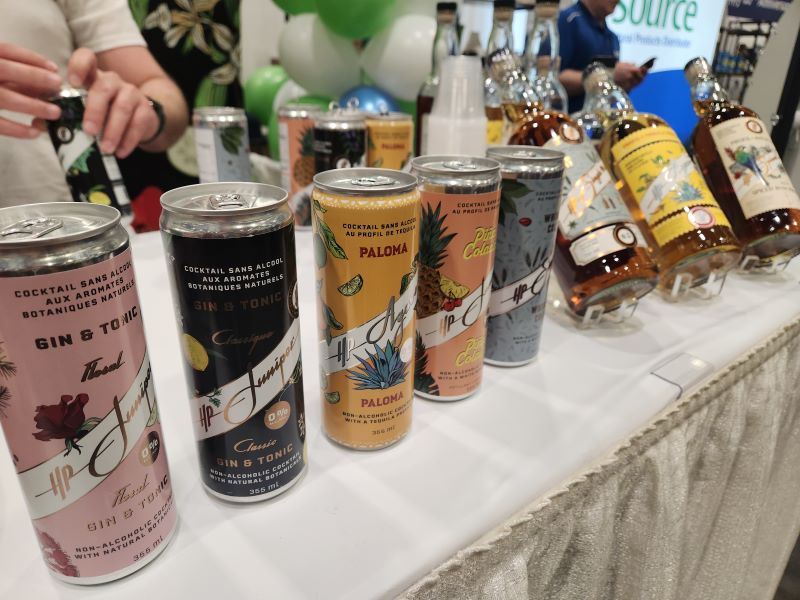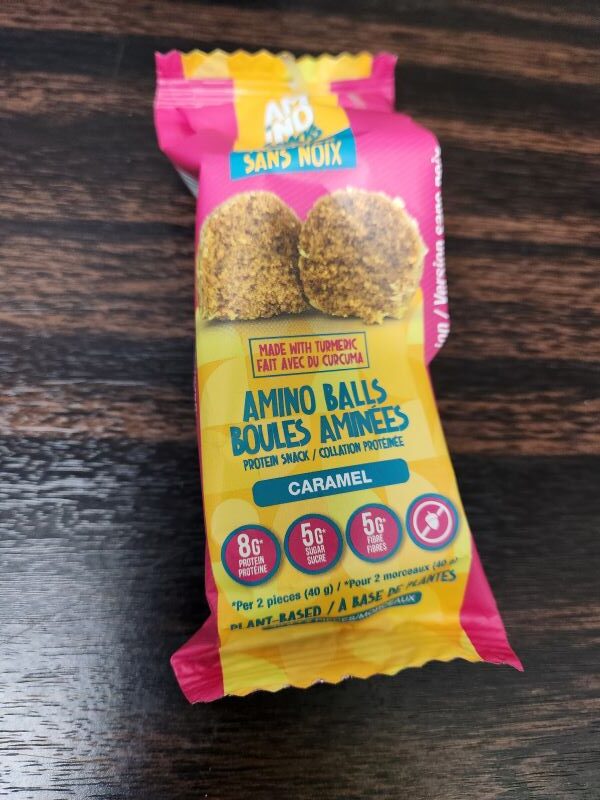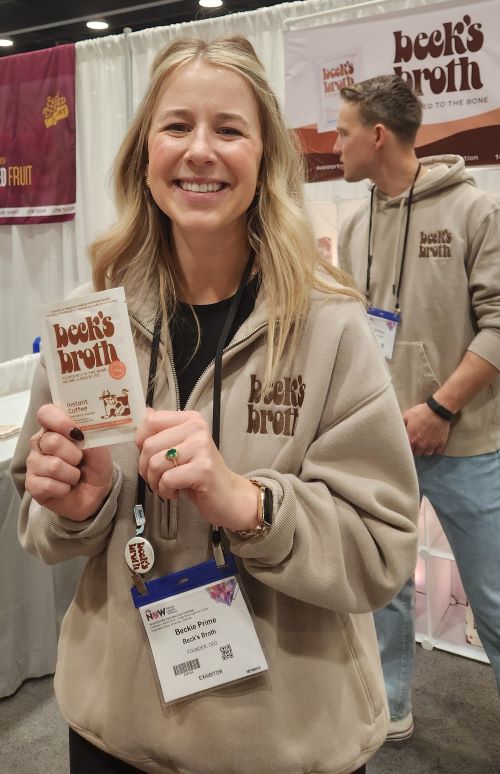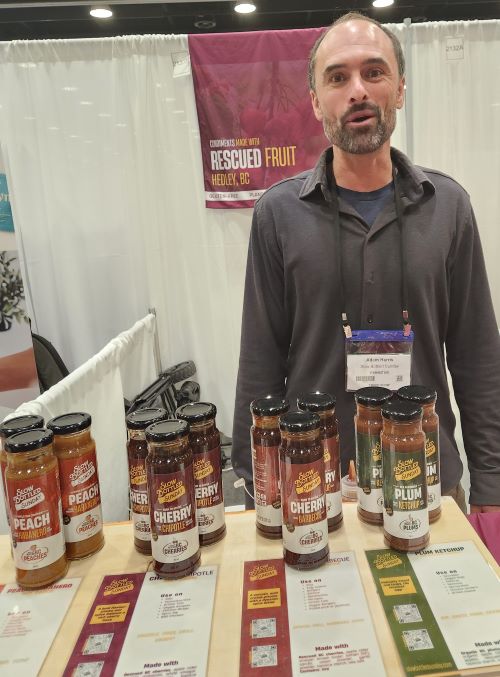One of my favourite research days of the year is attending the Canadian Health Food Association (CHFA) trade show. I go to this annual event looking for certain items, products that can help my patients. I also like to find out what’s out there, what’s new, what’s popular, and to learn what my patients are finding on the shelves or online when they search for solutions to their health concerns.
A lot of the things I see there are food, so it’s also my worst eating day of the year. 🙂 Though they may be labelled as “health foods,” no one is meant that many bites of a mishmash of gluten-free X, dairy-free Y, sugar-free Z, organic and fair trade A, keto B, and vegan C in one day. I know that people want to have their cake and eat it too, so they are looking for ways to “game the system.” We might say, “They were gluten-free cookies and dairy-free ice cream, so they must be healthy.” Well…
Anyway, I put myself through the rigours, testing and sampling a whole pile of foods and supplements so I could give you my thoughts. Tough life 😉 .
Let’s talk about the natural health trends and the tried-and-true products that I saw and sampled.
Alcohol-free drinks
Thank you Gen Z for consuming less alcohol and making it “a thing,” though apparently you do lean more toward the hard seltzers (carbonated water with alcohol and fruit). I rarely drink alcohol and I don’t go out much anymore, but it’s good that it’s becoming more common to have nice drink options that aren’t just water, pop, or orange juice.

I love the idea of these alcohol-free drinks, but remember they are usually still relatively high in sugar. I’m intrigued by the variety of flavours that were offered, from palomas and gin and tonics to mojitos and mules. Of course, there were also non-alcoholic beer options. I tasted a delicious pale ale by Partake, but didn’t like the peach gose flavour I brought home to try. Fruity beer is a nope for me, so wouldn’t have liked it either with or without alcohol, I think. Apparently, it’s one of their more popular flavours though, so don’t take my word for it.
In the bubbly drink options, we tried Karma fruit sodas, which I liked for the fact that this company uses fruit they grow in Kelowna and that they don’t add extra sugar. We tried Origin Organic in three flavours, lime, peach, and triple berry–I liked peach the most. These are zero-calorie sparkling waters with “natural flavours,” noting that “natural” isn’t always actually natural. I liked the Healtea Nettle and Rosemary sparkling drink and I’m curious about their other flavours. These drinks contain some organic herbs (though they don’t specify the amount), along with lemon juice, and maple syrup (meaning it has 8g of sugar).
Regardless of whether you can call them healthy or not, I like the taste of all of these drinks better than Bubbly drinks or pop.
Snacks, snacks, and more snacks
Though intermittent fasting is a popular way of eating now, apparently there are still many snackers out there because there were many snack options at the show!
I’m still working my way through my stash because, though I’m a grazer, I try not to have too many carby, sweet snacks. What I’ve tried so far is I had the caramel flavour of Amino Snacks’ Amino Balls. I like to make my own protein balls, as that’s much more economical, but these are handy carry and go snacks with 8g of protein, 5g of fibre, and only 5g of sugar. They aren’t kidding when they say they’re like dessert. I found this flavour very sweet, but if you have a sweet tooth, it’s a way healthier option than cake! Don’t forget–like I did–that they should be kept refrigerated. Oops!

While the Bob Snail dried fruit rolls and Martin’s apple snacks are designed for kids, I won’t tell if you are an adult who eats these snacks too. As sweet treats that have no added sugar (remember, the fruit they use already has sugar), no preservatives, no colourants or artificial flavours, and gluten-free, they are better options than other things you or your kids might snack on, including cookies, chips, or even most muffins you’ll buy in a store or cafe. Martin’s also offers a more grown up (or not) snack with a crunch in their apple chips.
The Good To Go soft baked bars are made like cookies using almond flour, meaning more protein and fibre. They are also low in sugar at 5g. I would call these a treat more than a snack, as all they really offer in terms of nutrients is the almond flour, but it’s a good option if you are going gluten-free. I found the consistency a bit odd, but only because it’s not really the consistency of a cookie, even though it looks like one.
The Love Good Fats bars offer a sweet-tasting snack bar for those who are eating keto. I’ve tried a few of these flavours and I would say it should satisfy your craving for something sweet tasting if you’re keto. They are also filling. I don’t follow a keto diet, so the texture is a bit of a hurdle for me to have more regularly, but I like them if I don’t have them often. Not a bad thing to not eat these types of snacks daily. 🙂
I thought I’d add in something savoury, as most of the snacks I got are sweet. However, the Jewels Under the Kilt (ridiculous name, but they seem to take their artisan nuts seriously) that I picked up are orange vanilla cream, so also sweet. Regardless, they are tasty.
Food Faves
How about regular, healthy food that you can eat daily? I could have put the Wild Planet sardines into the snacks section because they do make great snacks, but sardines are so much more than snacks. They are powerhouses of protein, omega-3 essential fatty acids, vitamins, and minerals. Because you’re eating the whole fish, that means you’re also getting the bones, rich in calcium, along with vitamin D for the absorption of those bone-supporting minerals. Even better, this company takes sustainability seriously.
I had heard of ghee before, but had never tried it. Ghee is a type of clarified butter, commonly used in India and Pakistan. Because the milk solids have been removed, it doesn’t need to be kept refrigerated. It is used in Ayurvedic medicine and it’s a great cooking oil. So, when I was offered a small jar of OG Ghee infused in herbs and garlic, I was excited to try it and now that jar is quickly being used up, so I’ll need to get more. And I’m wanting to try the other options!
When I was checking out the Navitas Organics booth, I mentioned that the goji berries, cocao nibs, and chia seeds that they had on display are part of my daily breakfast, so booyah, she gave me a bag of gojis. Yum! I’ve tried picking gojis myself in Abbotsford, but I prefer the flavour of the dried ones over fresh. However, if I had the yard for it, I would consider growing my own and getting a dehydrator to dry my own! In the meantime, I buy bags of dried ones and have this antioxidant Chinese herb food daily in my oatmeal.
What else do I put on my oatmeal? Oat milk. I hadn’t tried the brand Califia Farms before because I often make my own oat milk. However, if you want to use a frother to make a latte or other frothed milk drink, then you need to get a “barista blend” because it won’t work well otherwise. Oat is also a more sustainable milk alternative than almond because almonds need A LOT of water and the majority are grown in California, where they often have water shortages.
Speaking of oats, I picked up a couple of packs of Prana Organic overnight chia. To be honest, I haven’t tried them yet. All I need to do is pour it into a jar, add water, and wait at least 2 hours. However, these packs have 12-13g of sugar because the second ingredient after oats is cane sugar. Because I like to have oatmeal for breakfast, even when I travel, and spending $8+ dollars in a restaurant for that feels ridiculous, I think I might take this (or something like it) with me when I travel.
Bonus ones I didn’t get to try, but love the ideas of include:
- Beck’s Broth, an alternative way to get the benefits of bone broth, but mixed into hot chocolate or coffee and formulated by Beckie, a holistic nutritionist.
- Slow Bottled Sunday rescued fruit sauces and condiments are made with fresh, but unwanted (the “ugly”) fruit collected from BC farmers so that it doesn’t go to waste. I LOVE this idea and will have to search it out in stores.


Topical: A superficial view
If you’ve been in my clinic, you’ve likely either seen, smelled (lavender), or experienced the Epsom Gel topical gel I usually have on hand. I use it to help relax tight muscles at the end of a treatment, or patients purchase some to use at home–great to put on before bedtime or after a shower. Epsom gel has arnica to help decrease inflammation and speed healing from injuries, but I thought I’d try the MagSol, which has borage oil and no arnica at home. It’s a bit less expensive, but I have to say that I prefer the Epsom Gel because I feel it has more therapeutic value.
I met Judy, the founder of Wooms Relief, and we chatted about the many benefits of traditional herbal medicine. She was born and raised in the Traditional Territory of Ts’msyen People and she turned to natural healing to relieve her own pain. I’d heard of devil’s claw as an anti-inflammatory herb, but never devil’s club, so she gave me a container of her Devil’s Club Salve for pain relief to try out. I don’t have any in clinic, but you can buy it and other items she makes via her website.

Supplements
There were certainly supplements at the show that were new to me–some from companies I hadn’t heard of previously, some from companies I regularly order from. But, while I like to try new things, I have a lot of tried and true things and not a lot of space (in my clinic or in my brain) for a pile of new supplements. Having said that, I did manage to snag a few samples to try out because if there’s something more effective, why not?!
I even have some samples at my clinic for you to try out and give me feedback about.
Want to know more about the supplements or foods you see in my first picture here? Let me know.

